Things To Do In New York: The Rose Center for Earth and Space
 Today I went to the Rose Center for Earth and Space, featuring the New Hayden Planetarium. Years ago, when this place was much less high tech (and I was a high school dork) I would take dates (not that I had many) to the U2 and Pink Floyd laser light shows here.
Today I went to the Rose Center for Earth and Space, featuring the New Hayden Planetarium. Years ago, when this place was much less high tech (and I was a high school dork) I would take dates (not that I had many) to the U2 and Pink Floyd laser light shows here.Silly boy.
Years ago they closed it down to renovate the place, and I had not been back since. It's part of the American Museum of Natural History, which I covered in a previous post, and the combination is quite impressive.
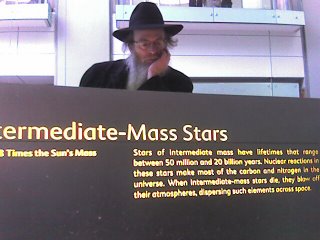 Even though the place ridicules things like Intelligent Design, people from all races, colors, and creeds seem to show up there.
Even though the place ridicules things like Intelligent Design, people from all races, colors, and creeds seem to show up there.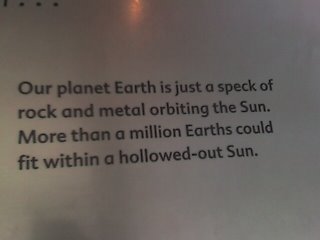 They all get to see the obligatory "we suck" sign.
They all get to see the obligatory "we suck" sign.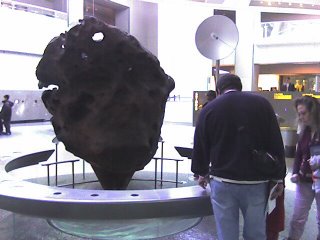 One of the more impressive pieces of their collection is the Willamette Meteorite, the largest one ever found in the United States and is revered by the Native American tribes that once lived in the area it crashed into.
One of the more impressive pieces of their collection is the Willamette Meteorite, the largest one ever found in the United States and is revered by the Native American tribes that once lived in the area it crashed into. The center used graphics, videos and displays to convey information, and unfortunately half of the stuff did not work (it really needs to be maintained better). That being said, what did work was really cool...like this wavelength reader. This is what I look like, based on a censor's measurement of heat and wavelengths.
The center used graphics, videos and displays to convey information, and unfortunately half of the stuff did not work (it really needs to be maintained better). That being said, what did work was really cool...like this wavelength reader. This is what I look like, based on a censor's measurement of heat and wavelengths.I look hot.
 To demonstrate the variation of gravity on nearby planets, scales are spread out in various parts of the main hall. I weigh 419 pounds on Jupiter, and I didn't even diet to get it that low!
To demonstrate the variation of gravity on nearby planets, scales are spread out in various parts of the main hall. I weigh 419 pounds on Jupiter, and I didn't even diet to get it that low! Life-sized examples of things like the Mars Rover, which is currently looking for water and life on our nearby neighbor, brings space exploration to life.
Life-sized examples of things like the Mars Rover, which is currently looking for water and life on our nearby neighbor, brings space exploration to life.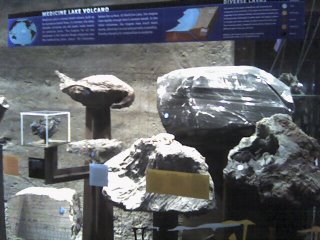 The real big upgrade to the center is its focus on geology, and it does a wonderful job of explaining difficult concepts and theories in a (relatively) simple way. It's hard to think of the Earth's crust as being "light" and the continental crust only covers 41 percent of the surface of the planet, but people smarter than me say it's so.
The real big upgrade to the center is its focus on geology, and it does a wonderful job of explaining difficult concepts and theories in a (relatively) simple way. It's hard to think of the Earth's crust as being "light" and the continental crust only covers 41 percent of the surface of the planet, but people smarter than me say it's so.According to the diagrams and charts, scientists use shock waves, including those coming from Earthquakes, to study the nature of what's below us. It is through this method that we believe the Earth's core is made of Iron, as certain kind of shock waves cannot penetrate it.
 A good amount of volcanic (igneous) rock is on display, along with theories on how and why they take place.
A good amount of volcanic (igneous) rock is on display, along with theories on how and why they take place.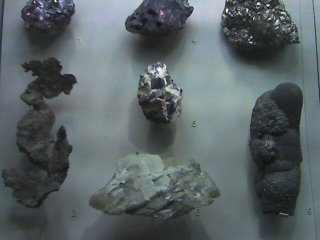 With all of the changes, the rocks and minerals that were a big part of the previous museum is preserved and expanded.
With all of the changes, the rocks and minerals that were a big part of the previous museum is preserved and expanded. Where else can a guy see some agate geode from Uruguay?
Where else can a guy see some agate geode from Uruguay? In the lobby, somewhat seemingly out of place, is a quote from a Republican President, Theodore Roosevelt, who speaks of environmental conservation. "Conservation means development as much as it does protection," he says. I wonder if anyone really believes that today.
In the lobby, somewhat seemingly out of place, is a quote from a Republican President, Theodore Roosevelt, who speaks of environmental conservation. "Conservation means development as much as it does protection," he says. I wonder if anyone really believes that today.This is well worth the trip.
RELATED LINKS:
Other Things To Do In New York
Other articles on Religion, Science, and Philosophy

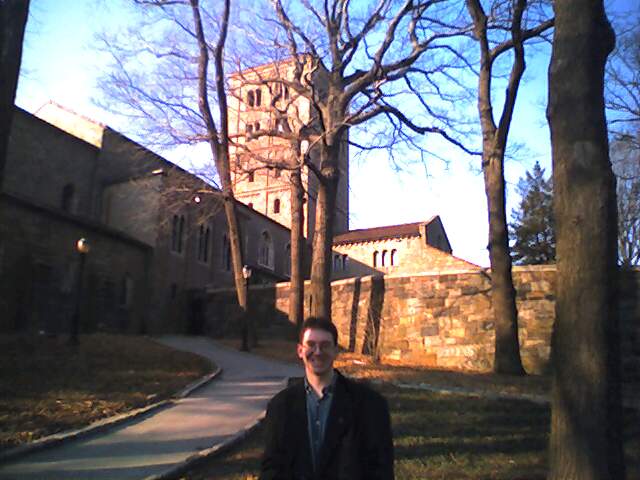

2 Comments:
I love the spiral ramp where you can go around and see the earth's size relative to everything from red blood cells to galaxies.
Have to say, I actually went to the Pink Floyd laser light show once with a nerdly friend of mine. What a trip! But the U2 show would probably have been better. Oh well.
I remember liking the U2 show, but it was only marginally less dorky than the Pink Floyd one. At least with Floyd, you know they use lasers for their concerts.
Post a Comment
|<< Home